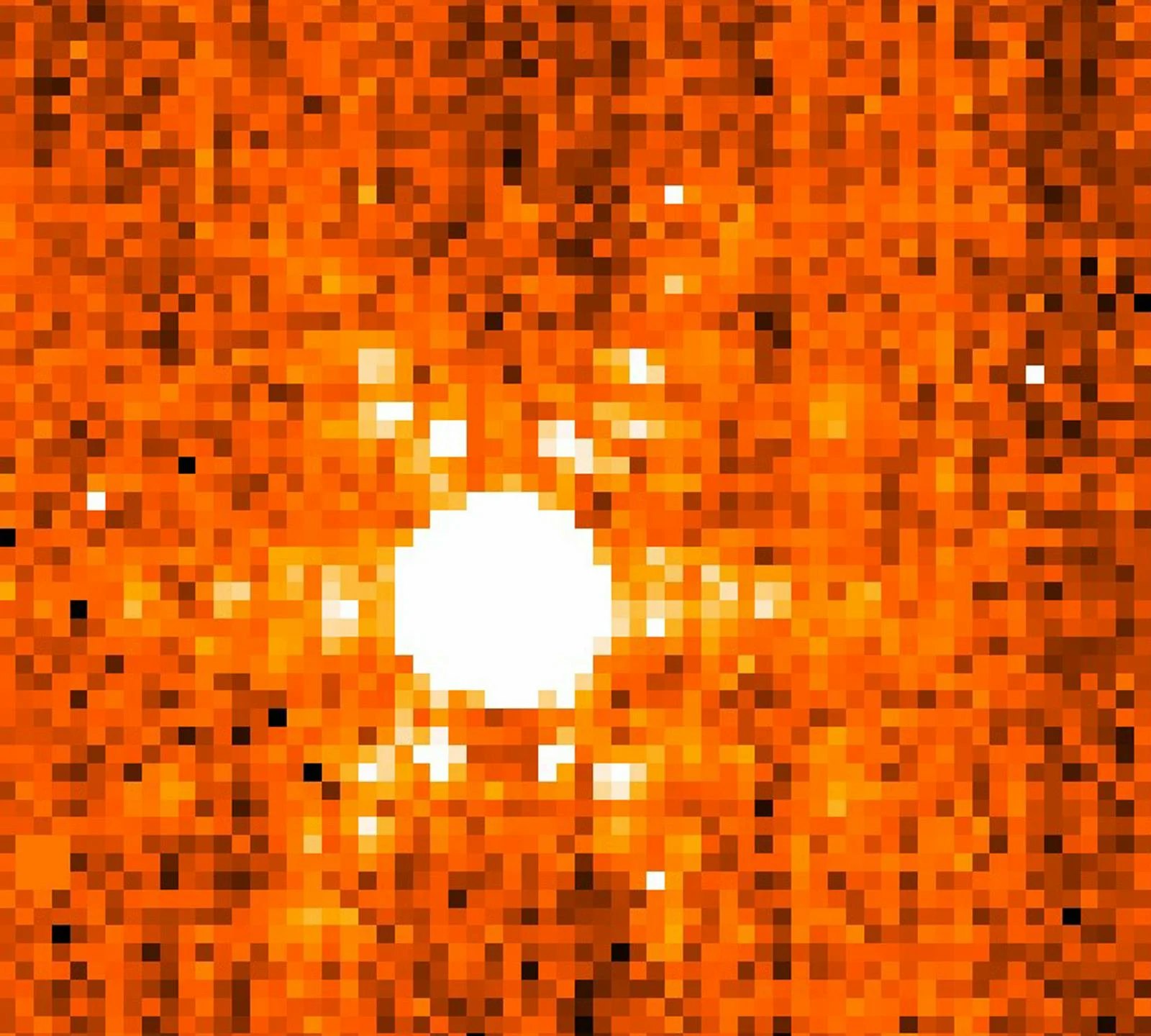
Hold on to your hats: We have the first confirmed images of TRAPPIST-1 from the James Webb Space Telescope. The star is one of the hottest targets in astronomy, as the TRAPPIST system’s planets are good candidates for potentially hosting life.
The images are ground-breaking in the level of detail they afford astronomers who want to study TRAPPIST and reveal its secrets. They also mark a leveling up of how we might study stars in general. Given the scientific import, it is perhaps all the more shocking that these images were made by a Redditor.

What the image shows — The image of TRAPPIST-1 is pixellated and, to the untrained eye, doesn’t reveal much detail. Webb’s NIRISS (Near InfraRed Imager and Slitless Spectrograph) instrument observed TRAPPIST-1 on July 18. Ultimately, this image is compiled with observations done during a quick setup shot with the NIRISS instrument to ensure the telescope was pointed and calibrated properly.
At the time, it is believed one of TRAPPIST’s seven Earth-sized planets was passing in front of the star, at least according to the Reddit threads (Inverse is trying to confirm this detail). The purported photo-bomber, TRAPPIST-1b, isn’t in the star's habitable zone. It orbits much too close to the red dwarf for life to stand a chance on its surface. But a glimpse at the makeup of its atmosphere would still be a huge step forward for exoplanet science.
Hidden details — Perhaps the real excitement lies hidden in a bright white, yellow, and orange whisp, representing the light from TRAPPIST-1.

The light in this image has been broken into the different individual wavelengths that make it up. Because each chemical element radiates and absorbs different wavelengths of light, scientists can use the spectrum of light from an object to understand what it's made of.
When Inverse worked to confirm the images, the Space Telescope Science Institute spokesperson relayed that the image and spectrum “look like you would expect” for processed NIRISS data.
So how did a Redditor get the data to make these stunning images? Let’s dig in.
How the images were made — Here’s the story: The data the new images are made from is Webb Telescope data collected on July 18. But the images are the work of a Redditor who goes by u/arizonaskies2022. (Inverse attempted to contact the Redditor through the platform for this story but received no response.)
This citizen scientist did the hard work of processing the publicly-available Webb data. They then posted the image on Reddit’s r/jameswebb forum on July 20.
“Both images are public raw data files I found and downloaded from MAST website,” writes u/arizonaskies2022 in a comment on their Reddit post.
“I did minimal processing. Neither image is cropped, just a little stretch and color.”
Webb’s NIRISS (Near InfraRed Imager and Slitless Spectrograph) instrument observed TRAPPIST-1 on Monday.
“The data was immediately made public,” a spokesperson for the Space Telescope Science Institute tells Inverse.
The Space Telescope Science Institute manages both the Webb and Hubble telescopes, and most of the raw data from the telescopes’ instruments are publicly accessible online. If someone has the right software and enough knowledge to turn the data into images or spectra, then they can. The Institute even hosts webinars to teach people how to do this kind of processing.
There are just a few exceptions to that rule; the scientists who helped design Webb’s instruments get a few months of exclusive access to data from their own observations.
What’s next for Webb — For all the TRAPPIST-1 fans out there, know that this is not the last we will see of this stellar exoplanet haven.
TRAPPIST-1 is a small, cool (both in temperature and in the sense of being interesting) star about 40 light-years from Earth. It is the host to seven rocky planets about the size of our Earth, and three of them are in the habitable zone — the area around a star where temperatures are just right for liquid water to exist on the surface of a planet.
Because it’s so close, and because it features so many Earth-like worlds in its habitable zone, the TRAPPIST-1 system is one of the hottest spots in the galaxy to search for potential life, or at least potentially habitable alien worlds.
If TRAPPIST-1b did pass in front of the star during Webb’s observations on July 18, then some of the star’s light may have filtered through the exoplanet’s atmosphere. By comparing TRAPPIST-1’s spectrum before, during, and after the planet’s transit, astronomers could draw some conclusions about the make-up of TRAPPIST-1b’s atmosphere.
More is coming: The Webb Telescope has already observed TRAPPIST-1 at least twice in two weeks of science operations. We can’t wait.







